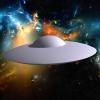Textures, Shaders, HDRIs, and More-how to...
 wildbillnash
Posts: 757
wildbillnash
Posts: 757
in New Users
I found a site of that has free HDRIs and textures but the site assumes you already know what to do since there's no 'how to' option. So, I have a few questions.
1. What are HDRIs and is there an tutorial on how to use them?
2. Are Textures and Shaders the same thing? If not, how do you use textures? Is there a tutorial for working with them?
Thanks in advance for any help on the subjects.


Comments
HDRIs, High Dynamic Range Images, are used by Daz Studio for lighting in Iray. If you purchase HDRI lighting from a vendor on the Daz site, the product will include presets, so you only need to double-click on the preset to apply the settings, much like you might double-click on the eye color preset of a character you have loaded.
To use an HDRI you've obtained on sites that provide them for free, you will need to manually apply the HDRI:
That's the basics of using an HDRI for lighting. There are quite a few other parameters, and I recommend you try them out with a test scene, but for the most part, the only other settings you will use regularly are Dome Rotation, Ground Position Mode, and Draw Ground.
Textures and shaders are not the same things.
"Textures" are materials, which use "texture" maps in a variety of parameters. When you apply "textures" to an object, those textures can apply different settings to multiple material zones. If you load a G8F base figure into the scene and decide you want to use different materials, you can locate the presets for any G8F character and double-clicking on the preset(s) will apply those materials, as long as the G8F is selected in the scene first. Materials are also dependent on Material Zone names. Using a preset from one product on another product might apply materials if one or more of the Material Zones have the same name, but the chances are the textures will not cover the item correctly.
Shaders are a set of parameters that can be applied to any material zone. I'm no expert on creating them, but I do know vendors have made some very cool effects by creating custom shaders. From what I have seen using shaders, they can be quite simple, highly complex, or anything in between. The one thing they all have in common is, you must select the object in the scene, and then you must select, in the Surfaces > Editor, the material zones you want to apply the shaders to. Othewise, the shader will not be applied.
I hope you find this bit of information helpful.
Thanks, L'Adair. A lot to learn. I'm going to play around with it.
But what I saw for HDRI were scenes, like a panoramic picture. In fact, I read you can create one with a camera (not sure how, though). The image onscreen looks warped but somehow when you add it to the scene it "warps" into place (I think). Here's a screen image of the site.
HDRI images use spherical mapping, hence the warping. The IRay environment is a virtual sphere around which the HDRI is wrapped.
As Sven says, those HDRIs are intended to be used on spherical objects. In Daz Studio, we use them in the Environment Map, which simulates a sphere, so there is no distortion of the image when you have Draw Dome set to On.
You can actually use any image in Environment Map channel, but unless it's an HDRI, you won't get proper lighting. And if it isn't "spherical", the image will be distorted with Draw Dome On. (There are a couple of "finite box" setting in the Dome Mode parameter drop-down, but I personally haven't seen any box HDRIs yet.)
Render Presets
To expand on what Richard said:
If you've saved the preset inside of My Library, you can easily find it from the Content Library.
As you can see, it's really pretty easy once you know the steps.